Among the fascinating documents in the museum’s archive is a recently discovered letter written by Charles Dickens to the Great Western Railway. It concerns a Christmas parcel which was sent to the famous author via the GWR goods service but never arrived. Dickens wrote the letter in response to the company’s apology and offer of compensation, saying that he understood that the parcel had been accidentally destroyed and was happy to let the matter drop. But what was in the parcel and how had it come to grief?
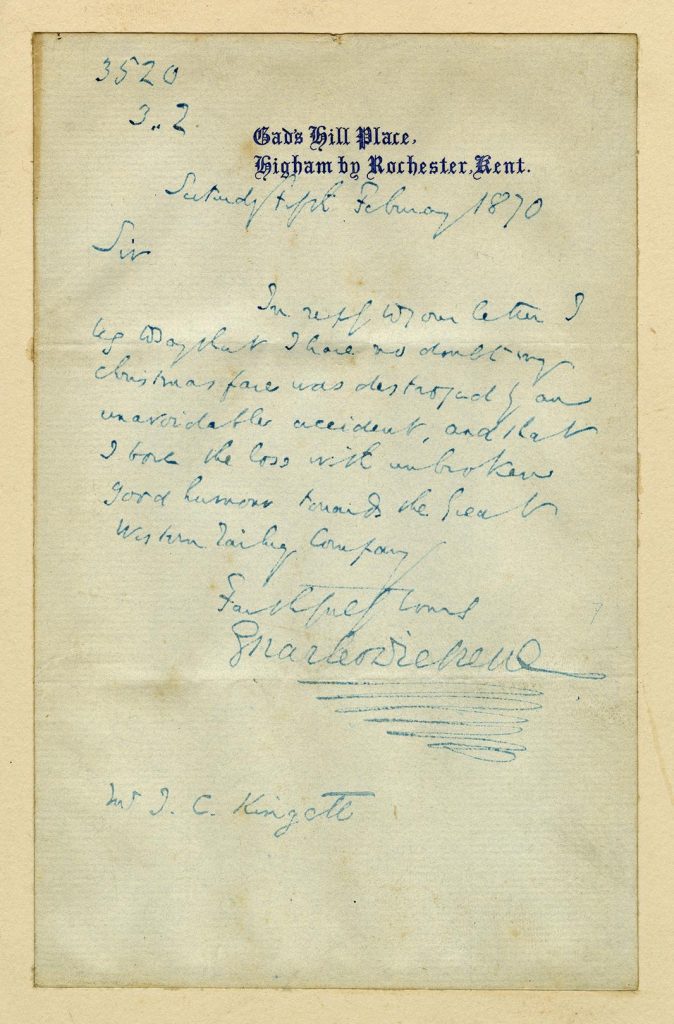
The parcel was sent in Christmas week 1869 by George Dolby, the manager of Dickens’ popular reading tours. It contained a magnificent turkey which weighed 30lb—that’s over 13kg—if Dolby’s account in his memoirs is to be believed. The parcel was dispatched from Ross-on-Wye, Dolby’s home town in Herefordshire, in plenty of time to reach Dickens on Christmas Eve at his home in Kent. But on the afternoon of Christmas Eve Dolby received an urgent message from Dickens:
WHERE
IS
THAT
TURKEY?
IT
HAS
NOT
ARRIVED
!!!!!!!!!!!
Much to Dolby’s distress and the embarrassment of the GWR, the Christmas hamper containing the turkey and other treats had been badly damaged by fire and was not in a fit state to be delivered. It had been transferred to a horse box at Gloucester, and somewhere between there and Reading the horse box had caught fire. The horse box was a type of enclosed van that was dual-purpose—it could be used to carry horses and/or goods, hence the name. It was an alternative to an open wagon in which goods were stowed under a tarpaulin. Neither sound a very hygienic way to transport fresh poultry.
It’s not known how the horse box, heavily laden with Christmas parcels, caught fire, but one possible explanation is that sparks from the engine set fire to its wooden structure while the train passed through a tunnel.
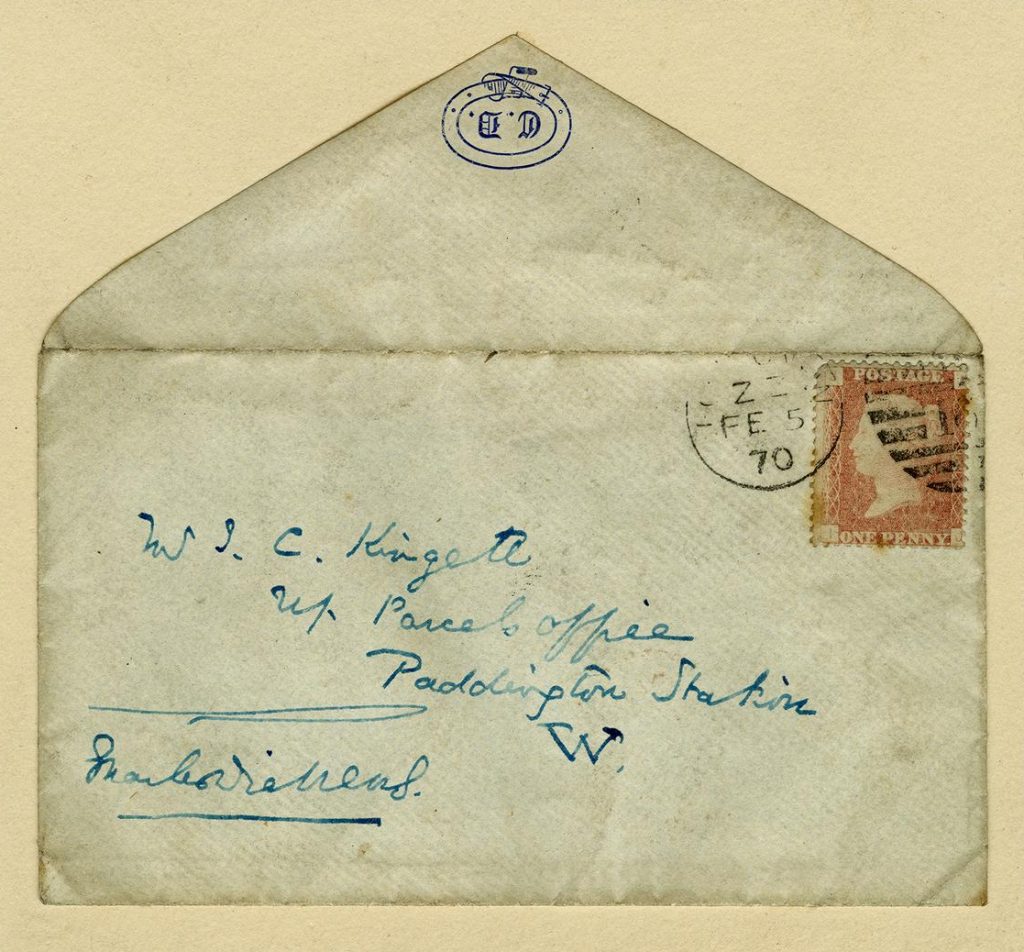
According to Dolby, Dickens was initially annoyed by the non-delivery of his turkey, but later saw it as a blessing when he learned – in another affront to modern principles of hygiene—that the poor people of Reading had been offered the charred remains at sixpence a portion!
Dolby himself took umbrage at the suggestion that monetary compensation could possibly make up for the distress he suffered at the thought of Charles Dickens going without his Christmas turkey. Is it likely that Dickens was able to get a replacement turkey in time for his Christmas dinner? We know from “A Christmas Carol” that it was possible to buy one on Christmas morning, as Mr Scrooge did for the Cratchit family, but the great Dickens might have had to make do with a humble goose.
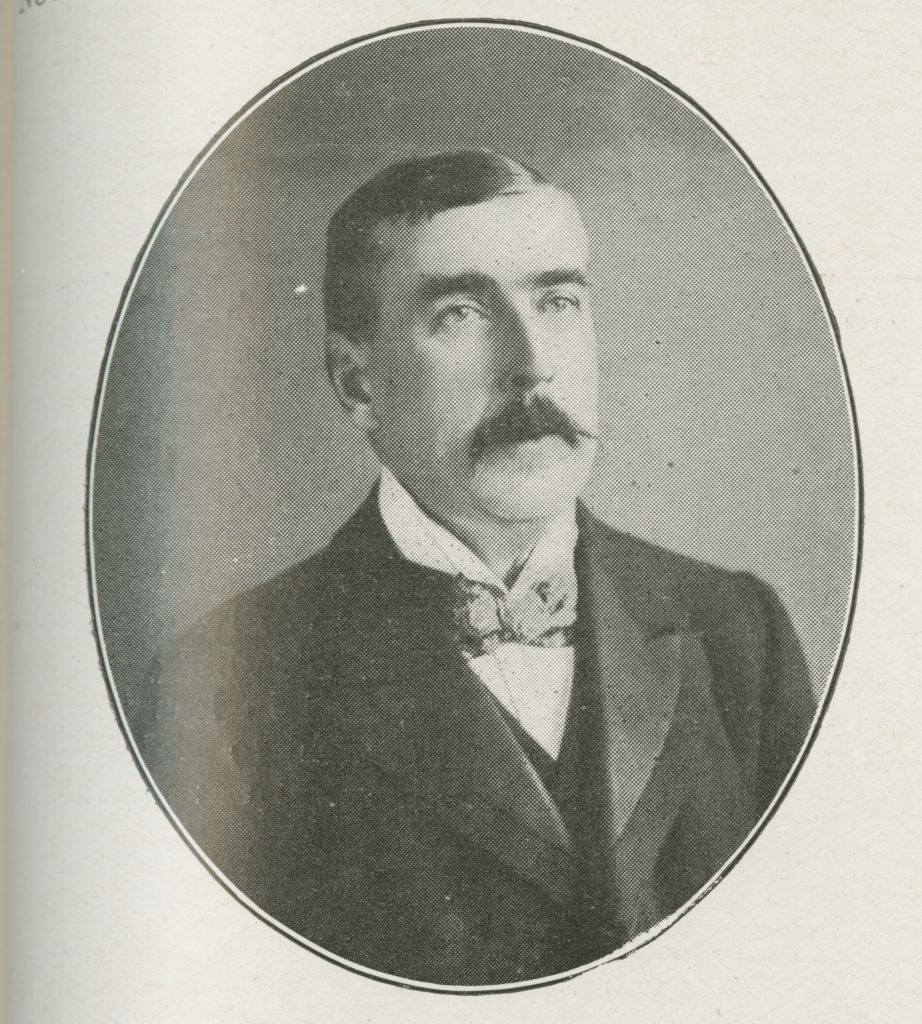
I wondered how the Great Western Railway company felt about jeopardising the Christmas dinner of one of the most famous figures of the age, whose name was inextricably linked with the sentimental image of the Victorian Christmas. The employee who dealt with the issue was Superintendent James Charles Kingett of the Up Parcels Department at Paddington station.
Kingett wrote to the customers affected by the fire, including Dickens, offering regrets and compensation. Evidently, he kept Dickens’ reply, because when he retired almost forty years later, in 1908, it was published in the Great Western Railway Magazine. The article described Dickens as “by universal consent the apostle of the modern Christmas…whose “Christmas Carol” has taken its place among the masterpieces of British literature”.
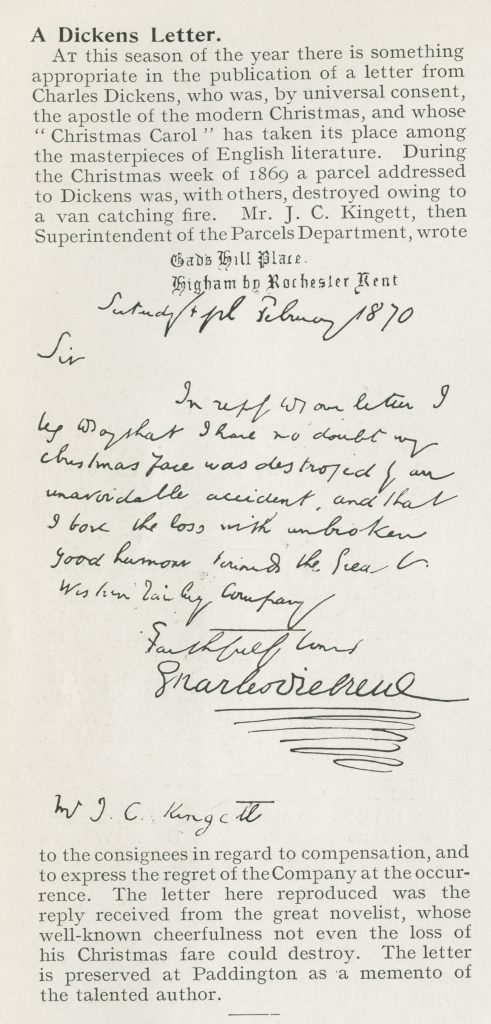
Kingett was born in 1842, so he was a relatively young man of twenty-seven at the time of the turkey incident in 1869. He joined the Great Western Railway company in 1862, working in the passenger department at Paddington, before gaining experience in various roles at Southampton, Reading and Smithfield. He was appointed District Goods Manager at Reading in 1893 and took charge of the London District in 1902. The responsibilities of his role were considerable, and clearly they took their toll. His retirement in 1908 was due to ill health. Kingett’s former colleagues noticed a marked improvement in his health and they were shocked when he died suddenly of heart failure on 23 January 1916, at the age of 74.
As for Dickens, Christmas 1869 with the unfortunate turkey incident was his last. He died in June 1870.
Dickens’ correspondence has been published in the Pilgrim Edition of The Letters of Charles Dickens. You can find examples of all his letters which have been discovered since 2002 at the Charles Dickens Letter Project.
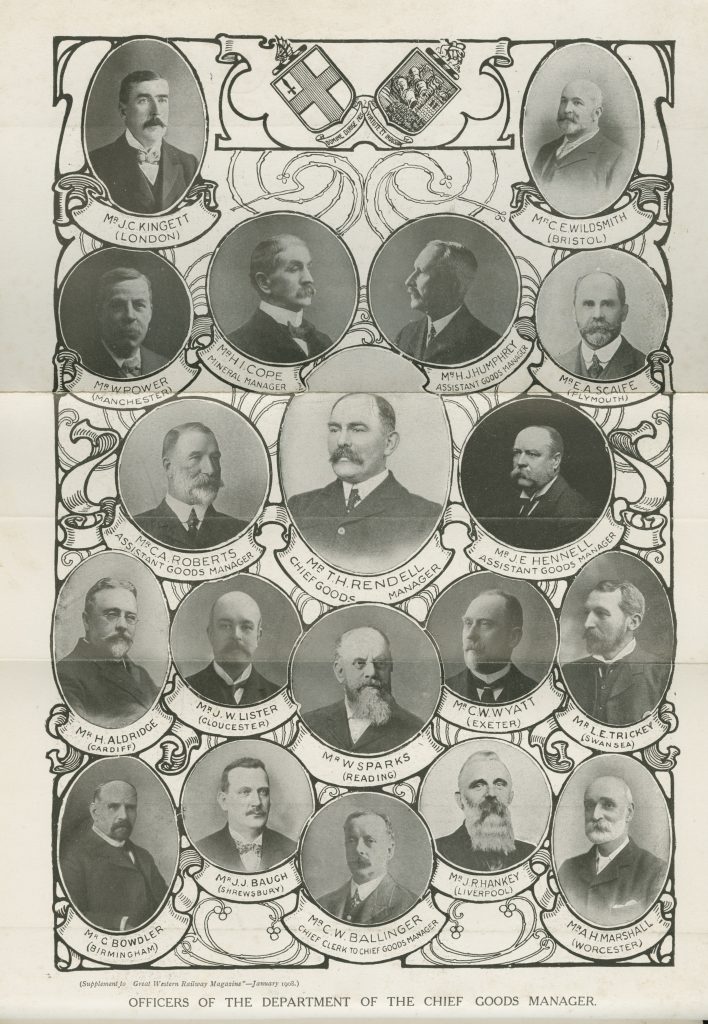
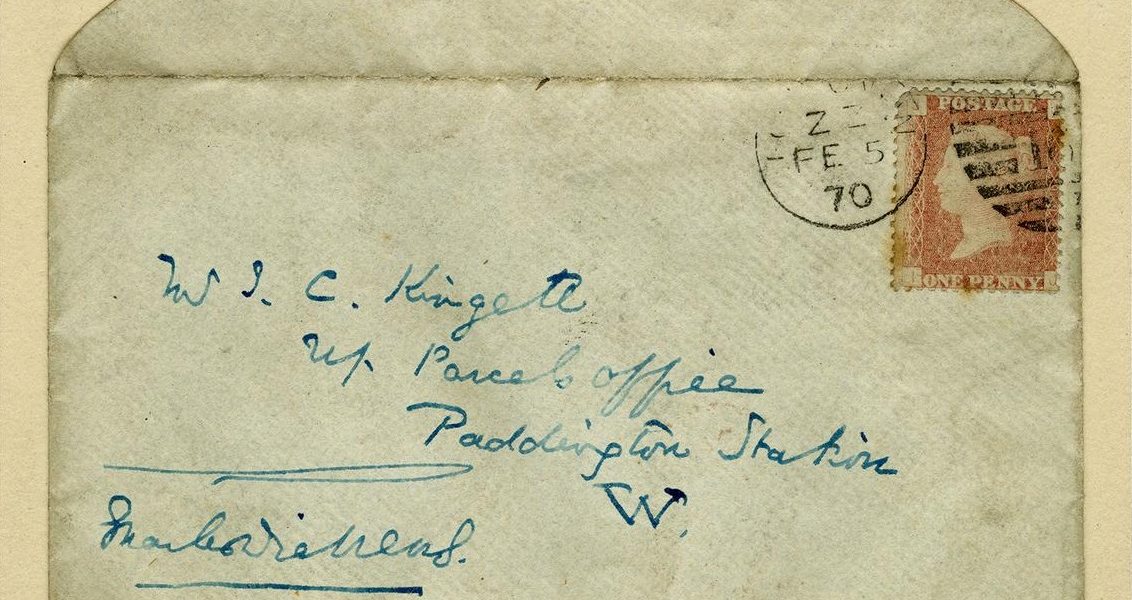
Re the burnt out horsebox – there is a photograph of a burnt out horse box 1995-7233_GWR_CNC_10 and CNC_11 taken in early 1900’s. CNC_11 is an end view.
It is highly unusual to record such event so may be the horsebox containing the Christmas parcel.
We have recently scanned and catalogued the glass negative.
Great story. History, intrigue! But I suspect fowl play! Apologies, but I couldn’t resist that!